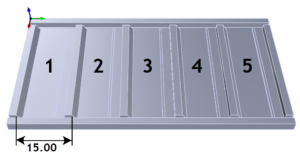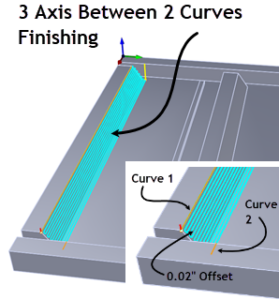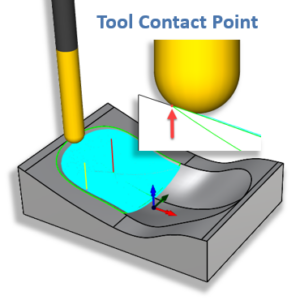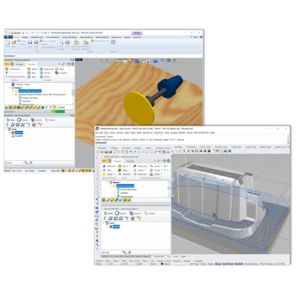Gordon currently owns a patent on a machine that makes hydrogen from distilled water and sunshine! You heard that correctly. Gordon is producing Hydrogen fuel from distilled water and sunshine, at pressures of up to 5,000 PSI, but without a compressor! The part and machining job illustrated below is a prototype component in Gordon’s patent.
The VisualCAD/CAM Part



The Machining Job
Post Definition

Stock Definition
Fixture Definition
The Work Zero
Center Drill (⅛” Holes)


Deep Drill (¼” Holes)


3 Axis Horizontal Roughing


3 Axis Horizontal Finishing (Lower)
![]()
It is highly recommended that you use Cut Arc Fitting for all 3 Axis operations. Arc Fitting will fit circular arc motions between corresponding linear motions resulting in a better surface finish and a small G-Code file. That’s because one circle (G02/G03) line of code will replace three linear G01 lines of code.


3 Axis Horizontal Finishing (Upper)
Similar to the lower finishing operation, the upper will also be 3 Axis Horizontal Finishing, employing the same ½” diameter ball end mill. For the upper operation, cutting tolerance is also set to 0.0005”.
Similarly, a Climb/Conventional (i.e., a Mixed) Cut Direction is used but with the step down between cut levels set to 0.02” and a Depth First cutting order. Cutting is also contained within specified Z limits. The Top upper limit is set to 0” (at the top of the stock and the Bottom lower limit is set to -0.25”. Again, these Z limit values are measured from the top of the stock where we have located the Work Zero. Similarly, all Entry and Exit moves will consist of lines and arcs and will be employed at each cut level with an overlap of 0.2”.


Deep Drill 7/16”
We mentioned that a 7/16” diameter drill is used and it cuts to a depth of 0.622” measured from the base of the counterbore hole at the bottom of each circular pocket. Being a Deep Drill operation, step increments of 0.1” are used to clear-cut material from the hole as it is being drilled.


2½ Axis Pocketing


2½ Axis Pocketing


2½ Axis Facing


2½ Axis Profiling



Additional Machining Setups
Cool project Gordon!
Thank you for allowing us to showcase your work!![]()
More about Green Fuel, LLC
Gordon’s startup company Green Fuel, LLC is currently manufacturing self-sustained hydrogen-fueled grills. Implementing Gordon’s patented process, his grills produce and store the required hydrogen fuel using tap water and solar-generated electricity from natural sunlight!
- To learn more about this exciting new technology, visit H2GRILLS – sustainable, reliable, and affordable hydrogen-based energy solution(www.h2grills.com)

- Watch the Green Fuel, LLC promotional video here.
- Visit the Green Fuel, LLC website at www.greenfuelh2.com
- Read the Green Fuel, LLC whitepaper.
- Read about the Green Fuel, LLC technology patent here







